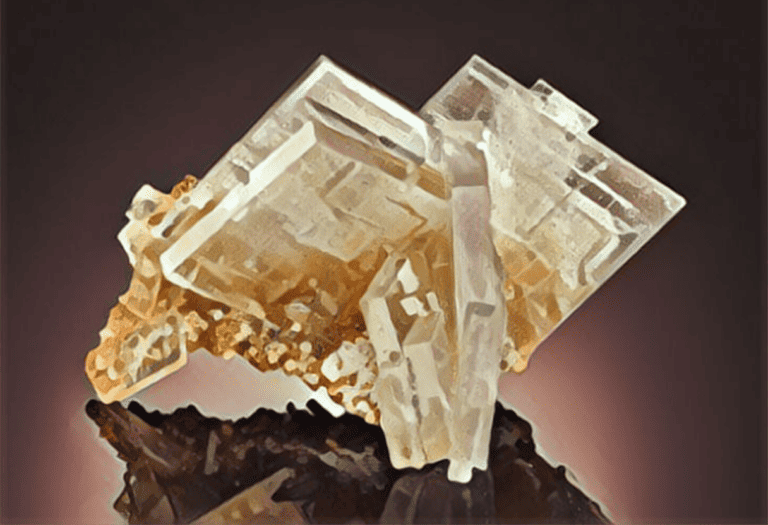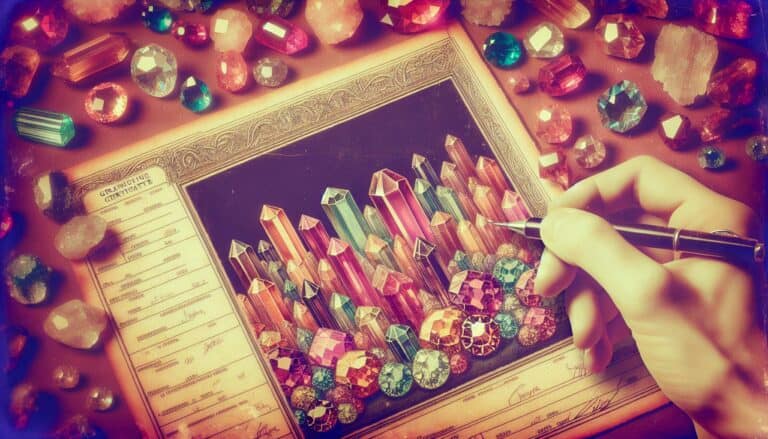Curious about the worth of topaz?
You’re not alone. This stunning gemstone, known for its dazzling array of colors and crystal clarity, is a favorite among jewelers and collectors. But what’s the real value behind this beauty?
Determining topaz’s worth isn’t as straightforward as you might think. It’s influenced by a multitude of factors, from color and clarity to carat weight and cut.
Let’s dive into what makes topaz a treasure and how these elements affect its market price.
Topaz value goes by color, clarity, cut quality, and availability. The rarest, Imperial Topaz, often gets higher prices due to its unique orange-pink hue. Blue Topaz, popular yet commonly treated for color enhancement, is more affordable. Quality factors include vibrant color, high clarity, expert cut, and size, with larger stones being more valuable.
What Is Topaz?
Topaz is a silicate mineral of aluminum and fluorine, commonly found in granitic and rhyolitic rocks. It’s renowned for its toughness and durability, making it suitable for various jewelry designs. As you explore the world of gemstones, you’ll find that topaz can come in an impressive spectrum of colors. Many people immediately think of the golden brown to yellow hues, often called imperial topaz, but the range extends to blues, pinks, and even colorless varieties.
The color of topaz is generally caused by impurities in the mineral, and interestingly, natural blue topaz is quite rare. In fact, most blue topaz available on the market today has been treated by irradiation and heating to enhance its color. Despite this enhancement, blue topaz has gained popularity for its vibrant tones and affordability compared to other blue stones like sapphires.
- Imperial Topaz: Peach, orange, or pink hues, often the most valuable.
- Blue Topaz: Enhanced for color, but widely available and popular.
- White or Clear Topaz: Often uses as a substitute for diamonds due to its clear color and less expensive price point.
Topaz scores an 8 on the Mohs scale of hardness, signifying its ability to resist scratches and everyday wear and tear. This durability adds to its appeal for rings, necklaces, and other types of jewelry that are prone to knocking or rubbing. You should know, however, that despite its toughness, topaz can be prone to chipping or cleaving if struck with enough force. Therefore, it requires care and consideration when being set into a piece of jewelry.
What makes topaz particularly unique is its pleochroism, the ability to display different colors in different crystal directions. When expertly cut, the gem can exhibit an entrancing depth of color. The cut of the topaz not only enhances its beauty but also contributes significantly to its value. Opting for an expertly cut topaz may cost more upfront but tends to reflect in the gem’s brilliance and overall worth.
Inclusions are another factor that define the quality of topaz. Generally, the fewer the inclusions, the more valuable the stone. Clear topaz with little to no visible inclusions is highly sought after, further underlining the importance of clarity in evaluating topaz’s worth.
Topaz Prices: Factors That Affect Value
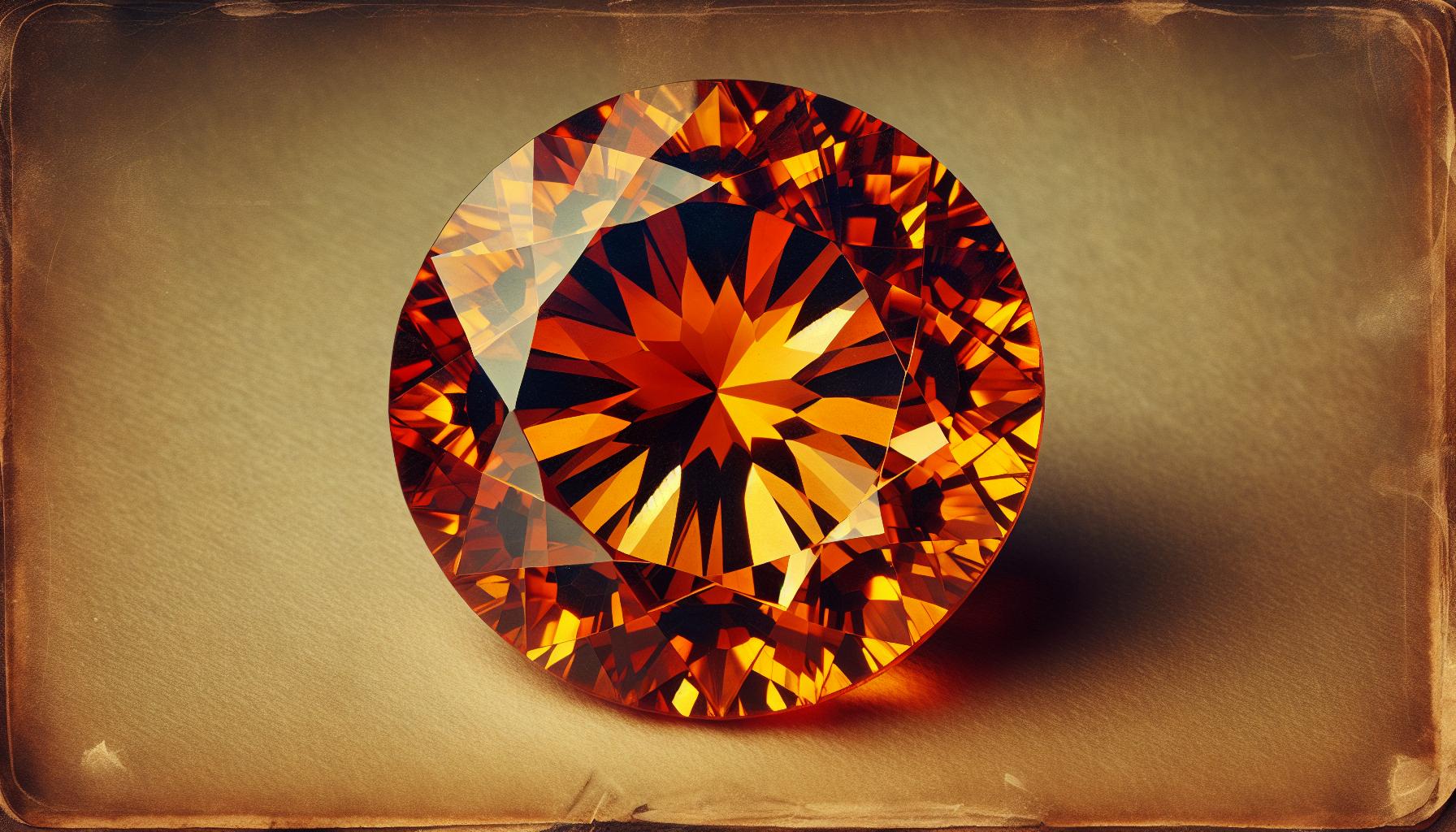
Color, Clarity, and Cut Quality
When assessing the worth of topaz, several key factors come into play, with color, clarity, and cut quality at the forefront. The rarer the color, the higher the price—the imperial topaz, boasting a gorgeous golden-orange hue, often commands the top tier of value due to its scarcity and pleasing aesthetic. But it’s not just the color that matters; how the color is distributed across the gemstone is also critical. Uniformly colored stones are more sought after than those with uneven hues.
Clarity is another crucial element. Topaz with few inclusions or blemishes fetches higher prices. In particular, clarity is paramount for lighter-colored topaz, where imperfections are more visible. Your investment in a clear, flawless piece could yield dividends should you decide to sell later on.
The cut of the topaz also significantly influences its value. A skilled gem cutter can enhance the stone’s natural beauty and even mask certain inclusions, thereby increasing the gemstone’s overall worth. Well-crafted faceted cuts are prized for their ability to reflect light and provide brilliance, making the gem more attractive to buyers.
Market Demand and Availability
Supply and demand play pivotal roles in the valuation of topaz. Certain colors of topaz, such as the richly saturated blues and the prized imperial shades, have a steady demand, which can drive up prices. Market trends can fluctuate, with certain colors falling in and out of favor. During times when topaz is trendy, you’ll notice an uptick in value, especially for high-quality pieces.
Availability also impacts cost. Although topaz is a relatively abundant gemstone, the finest quality stones are rare and thus more expensive. Mines that produce high-end topaz can deplete over time, reducing the influx of premium stones and increasing their rarity and, subsequently, their price. Keep in mind that treatments affecting color and clarity can affect the value—naturally occurring hues and clarity are more valuable than those that have been enhanced artificially.
With this in mind, it’s clear why topaz remains a beloved gem in the jewelry industry. Its allure is constant but the factors influencing its price are dynamic. For enthusiasts and collectors, understanding these variables is essential in making informed purchase or investment decisions.
Understanding Topaz: A Rare Gem

The Rarity of Topaz
When you’re considering the value of topaz, its rarity can’t be ignored. Topaz is widely available, but the true value lies in specific colors like the Imperial topaz, which flaunts a magnificent orange-pink hue. This variety is scarce and highly sought after, influencing its market price considerably. Another rare color is the pink topaz which often fetches a higher value due to its limited availability. It’s pivotal to understand that ubiquity doesn’t always equate to lesser value; the trade-off between color rarity and demand plays a critical role in establishing a stone’s worth.
Origins and Characteristics
Topaz is found across the globe, with notable deposits in Brazil, Pakistan, Russia, and Nigeria. Each location produces topaz with distinct characteristics that can affect its value. For example, Ouro Preto in Brazil is renowned for high-quality Imperial topaz. Knowing a topaz’s origin can provide essential clues into its potential value and quality.
Topaz’s unique characteristics extend far beyond color. It boasts an impressive hardness of 8 on the Mohs scale, making it durable for jewelry. However, it also has perfect cleavage, which means it can split easily if struck with force – a factor to be wary of. When you’re evaluating topaz, remember that its remarkable luster and brilliance only manifest with expert cutting, which accentuates its natural beauty and contributes to its desirability on the market.
Maintaining an awareness of a topaz’s origin, combined with an understanding of its innate properties, empowers you to make more informed decisions whether you’re adding to your collection or selecting a stunning piece for everyday wear.
Topaz Grading and Valuation
The Grading System for Topaz
When delving into the depths of topaz valuation, it’s essential to get a grasp on the grading system that gemologists and jewelers use to determine a topaz gemstone’s quality. Much like diamonds, topaz is evaluated based on the “Four Cs”: color, clarity, cut, and carat weight.
Color holds the throne in topaz valuation. Topaz stones presenting with vivid, natural hues fetch higher prices, especially the esteemed Imperial topaz, which flaunts a golden-orange to pink hue. Clarity follows color in importance, where the fewer the inclusions, or internal flaws, the more valuable the stone is.
The cut of a topaz doesn’t just impact its beauty, but its value as well. A skillful cut optimizes the stone’s brilliance and minimizes any visible inclusions, enhancing the gem’s overall appeal. And finally, the carat weight influences the price, with larger topaz gems typically commanding higher values, provided the other three Cs meet high standards.
To beginner gem enthusiasts, these grades might seem abstract, but they are critical benchmarks that affect the market value of topaz significantly.
Certification and Appraisal
You’d want to ensure that the topaz you’re eyeing is appraised and certified by a reputable gemological lab, wouldn’t you? Certification is your proof of the gemstone’s authenticity and quality, while appraisal determines its market value.
Certified topaz stones come with documents stating their characteristics and grades, as evaluated by gemological authorities such as the Gemological Institute of America (GIA). Receiving an appraisal, done by a qualified gemologist, translates all the technical jargon into a dollar value.
When seeking certification and appraisal for your topaz:
- Look for renowned gemological institutions
- Confirm the gemologist’s credentials and experience
- Ensure the appraisal includes a detailed grading report
Certification and appraisal are indispensable, particularly if you’re considering a significant investment in topaz. Not only do they give insights into the value and quality of your gemstone, but they also serve as essential documents for insurance purposes. Remember, when it comes to fine gemstones, rigorous documentation is as critical as the gems themselves.
Current Market Trends in Topaz Pricing
In assessing the worth of topaz in today’s market, current trends are as pivotal as the Four Cs. The market for topaz has seen intriguing shifts, and keeping a finger on the pulse of these changes can help you gauge the gem’s true value. Recent years show an increasing appreciation for this November birthstone across various jewelry markets, influencing its demand and price.
Blue topaz, in particular, maintains a top spot in popularity, not only for its captivating color but also for its affordability compared to other blue gemstones like sapphire. Imperial topaz – the champagne to reddish-orange variety – boasts the title of the most sought-after and is priced significantly higher. Its rarity and unique color spectrum push its value up, making it a prize for collectors and enthusiasts alike.
Technological advancements have also left their mark on topaz pricing. Gem treatments such as irradiation and heat treatment, which enhance color and clarity, have become commonplace, affecting prices differently based on the type and quality of the treatment. Treatment methods are becoming more sophisticated, providing gems that once weren’t considered marketable with a spot in the showcase.
For those interested in investment pieces, fine-quality imperial and pink topaz have shown steady price increases, signaling a solid investment over time. However, like all markets, volatility is a factor. Political shifts, mining disruptions, and changes in fashion trends can all influence topaz pricing.
To encapsulate these dynamics, here’s a glance at some notable price points by category:
| Variety | Price Range (per carat) |
|---|---|
| Blue Topaz | $20 – $40 |
| Imperial Topaz | $300 – $450 |
| Pink Topaz | $100 – $350 |
Remember, these values are approximations and can vary significantly based on the factors previously discussed. Your best bet for a current price assessment is to consult with a reputable jeweler or a certified gemologist, who can offer a tailored analysis based on the most up-to-date market information. Keep an eye out for global market conditions and emerging trends in gemstone fashion, as these too will play their part in the continuing story of topaz valuation.
The Most Expensive Topaz
When it comes to the pinnacle of topaz value, Imperial Topaz reigns supreme. Renowned for its vibrant shades ranging from golden yellow to the coveted pinkish-orange, Imperial Topaz boasts some of the highest price tags in the market. This rare variety, primarily found in Brazil’s Ouro Preto region, is sought after by collectors and connoisseurs alike.
Among the factors driving the cost are the gemstone’s quality, size, and color. Specifically, a reddish hue, often referred to as ‘imperial’ or ‘sherry’ topaz, significantly increases the stone’s worth. Stones over 10 carats that showcase these hues coupled with clarity without significant inclusions can fetch prices well into the thousands per carat.
The record-holding topaz pieces can be priced extraordinarily high. For instance, one of the largest faceted topaz gemstones, the ‘El-Dorado Topaz,’ weighs an astonishing 31,000 carats. While not all topaz pieces reach such monumental sizes or values, exceptional gemstone specimens can easily command princely sums.
Understanding the sheer value inherent in premium topaz stones, here’s a simplified table reflecting average prices. Note that these are subject to fluctuate based on various aspects like market demand, economic conditions, and rarity.
| Carat Weight | Average Price Range |
|---|---|
| 1-2 carats | $50 – $500 |
| 5-10 carats | $500 – $5,000 |
| Over 10 carats | $1,000 – $10,000+ |
It’s worth mentioning that specialty cuts or historical provenance can enhance a topaz’s value beyond these general ranges. Whether embedded in royal tiaras or standing alone in a collector’s display, the most expensive topaz specimens embody a blend of art, history, and natural wonder.
For avid collectors and fashion enthusiasts, investing in high-quality topaz jewelry can be both a style statement and a savvy financial move. With its enduring elegance and potential for appreciation, a piece of high-carat, richly hued topaz jewelry isn’t just a splendid adornment—it’s a tangible asset. As market trends evolve and the desire for unique gemstones grows, so does the potential for topaz to become an even more precious find within the jewelry world.
Buying Topaz: Tips and Recommendations
Where to Purchase High-Quality Topaz
When looking to purchase topaz, selecting the right vendor is critical for quality and value. High-quality topaz can often be found at reputable jewelers who specialize in fine gemstones. Artisan markets and gem shows are also excellent venues to explore as they often feature unique pieces and allow direct interaction with knowledgeable vendors.
Online marketplaces may offer convenience and a wide selection, but they require a cautious approach. Always check the seller’s reviews and credentials before making a purchase. For those who prioritize the highest quality, consider visiting a certified gemologist who can provide expert advice and access to top-notch topaz specimens.
- Reputable brick-and-mortar jewelers
- Artisan markets and gem shows
- Certified online marketplaces
- Certified gemologists
Ensuring Authenticity and Value
To guarantee the authenticity and value of your topaz purchase, request a certification from your seller. A certificate from a recognized gemological institute ensures the stone’s quality and authenticity and may assist in future appraisals. Inspecting the gemstone’s cut, clarity, and color under proper lighting conditions can also reveal its inherent value.
It’s wise to familiarize yourself with the typical inclusions found in topaz, as they can impact both the appearance and the price. Always inquire about treatments or enhancements, which are common with topaz, as they can significantly affect the gem’s durability and value. Remember, untreated natural stones typically command a higher price.
- Certification from recognized gemological institutes
- Inspection of cut, clarity, and color
- Understanding typical inclusions
- Knowledge about any gemstone treatments or enhancements
Conclusion: Buying & Selling Topaz
Determining the true worth of topaz requires a keen eye and knowledge of the market.
You’ve learned that the value hinges on several factors, with color, clarity, and cut being paramount. Remember, the allure of blue topaz continues to captivate, while the rarity of pink and imperial topaz can command higher prices. Stay ahead by keeping an eye on market trends and seeking expert advice when necessary. Whether you’re adding to your collection or selecting a stunning piece for someone special, ensure you’re getting the best value by purchasing from reputable sources and verifying authenticity.
Topaz’s worth isn’t just in its price tag—it’s in the beauty and enjoyment it brings to your life.

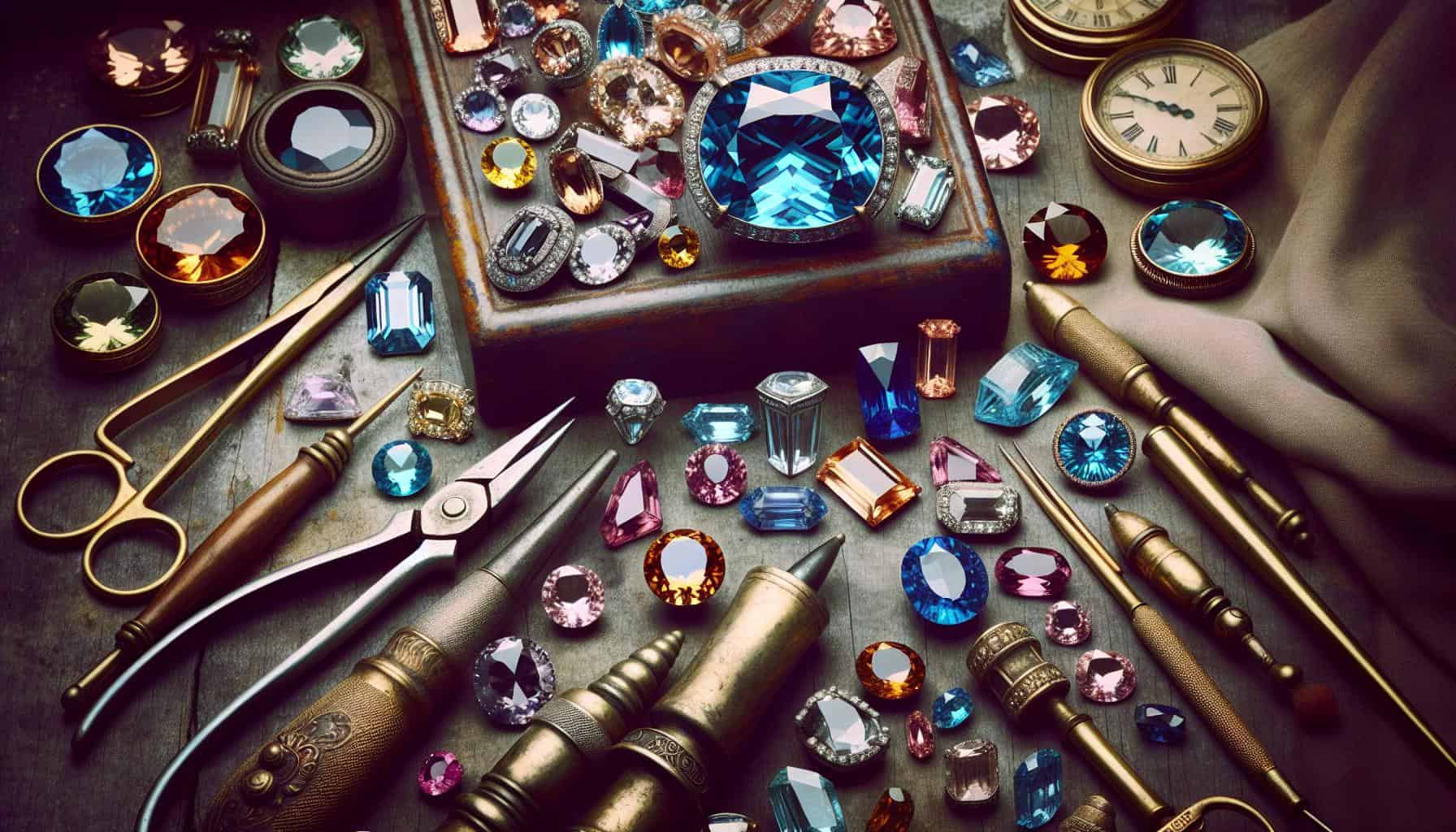
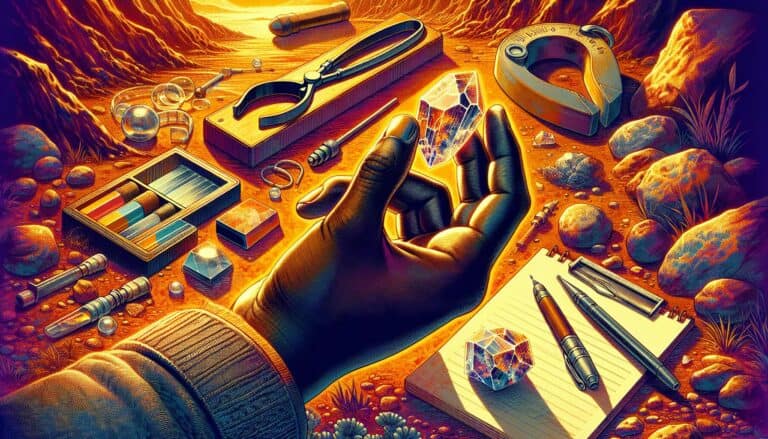
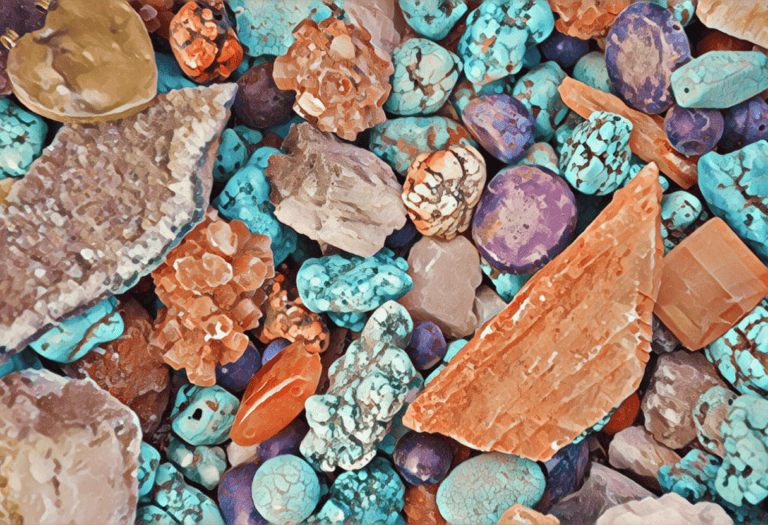
![Setting Prices for Handmade Jewelry [year]](https://observationhobbies.com/wp-content/uploads/2024/01/dVTRvDJ0W4koSsyHjCF9V-768x439.jpg)
![Maine Rockhounding Sites in [year]: Find Tourmaline & More](https://observationhobbies.com/wp-content/uploads/2024/01/mlZUKYsOvqRrJjM0_zS5h-768x439.jpg)
